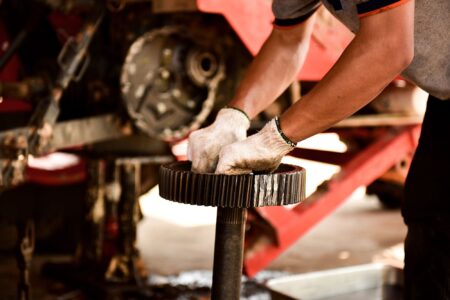A vintage advertisement for the Allis-Chalmers Model G tractor states, “For all jobs on some farms; for some jobs on all farms.” That phrase holds true for today’s 40–99-hp utility tractors: Most farms can find at least one use for a tractor that size, and some farms may only need a tractor that size.
“When I look at a heat map of the United States where these are listed, it’s all across the board,” said Andy Campbell, director of insights at Tractor Zoom. “There’s livestock farmers; fruit and specialty growers; even rural landowners and local governments are buying these units.”
He noted that sales for the year’s first couple of months are slower, but supply is improving, and dealers may have incentive to move utility tractors off their lots.
“I recently spoke with dealers out East, in Texas, and the Midwest. They all mentioned one of their goals this year is to push utility and compact tractors,” he said. “And they’re not the only ones. Dealerships are seeing utility tractors as a way to balance out a bit of the volatility in ag, because the market is so broad.”
John Marshall, sales manager at Kunau Implement Company, in eastern Iowa, calls utility tractor sales “normal.”
“The demand year-over-year on these has been pretty consistent,” he said. “The only time we’ve had a hiccup was when we had a supply shortage during COVID, and when we had them available, we had people ready to buy them.”
Marshall noted that, like most equipment, there is a bit of an availability gap in used 3–5-year-old utility tractors due to supply chain disruptions.
Recent Sales Data
Used auction prices for all manufacturers have hit a relative valley, Campbell said.
“If you’re looking for one of these tractors, a drop in the market is not a reason to wait,” he said. “And, with potential government payments throughout this year, used pricing could go up.”
The average auction price for model year 2021 and newer 40–99-hp tractors was $32,544 across 1,307 machines sold, according to TractorHouse. The high seller was a 2022 John Deere 5090R with 175 hours in South Dakota for $98,000. It had a loader and a grapple bucket, along with a premium cab package.
The lowest price was $5,000 for a 2021 New Holland Workmaster with 5,203 hours in Wisconsin. That unit did not include a loader and was an open-station design.
These tractors are designed for a variety of attachments and implements such as loaders, grapple buckets, and mowers; all added to the sale value. Open-station models tended to sell for less, while cabs with heat, air, and sound systems brought a premium.
“People are looking for a cab tractor and they’re looking for a loader,” Marshall said. “They want MWFD or 4-wheel drive so they can get out in the snow and muddy conditions, and they want something you can get in and out of easily, with good visibility.”
Factors Affecting Price
When buying a used utility tractor, buyers should look carefully at a few key components, because these machines are so versatile.
“These are, first of all, loader tractors,” Marshall said, “so you want to watch how the loader moves. Also, look at the frame of the loader, because if you don’t get into a load [squarely],
the loader can buckle one way or the other.”
He said he also recommends looking at maintenance records, because the frequency of use means routine care sometimes goes by the wayside.
“These tractors can be a hired man, used every day,” Marshall said. “I’ve had customers pretty sure they changed the oil 300 hours ago, but when they check the book, it was more like 800 hours ago, because they just forgot.”
Hydraulics are another area to check, and any attachments should be looked over to be sure they work as they should due to fit and flow.
Marshall said livestock producers are his highest- demand customers, but buyers come from all types of farms.
“Grain farmers put them on augers,” he said. “And people who are buying acreage for a small farm, this one tractor can do almost everything for them.”







:max_bytes(150000):strip_icc()/7021232WM120_SeriesII_4B_MY24_001_preview-d734870b844449b6ba58ef474248db28.jpg)



:max_bytes(150000):strip_icc()/Ship-docked-at-Port-Houston-1741d74fc460476881a4754e9ad43f42.jpg)
:max_bytes(150000):strip_icc()/54163679242_59f748f514_oSAFethanolplant-Iowa-d55130af73f44d9cb58b780fbdef60f2.jpg)
